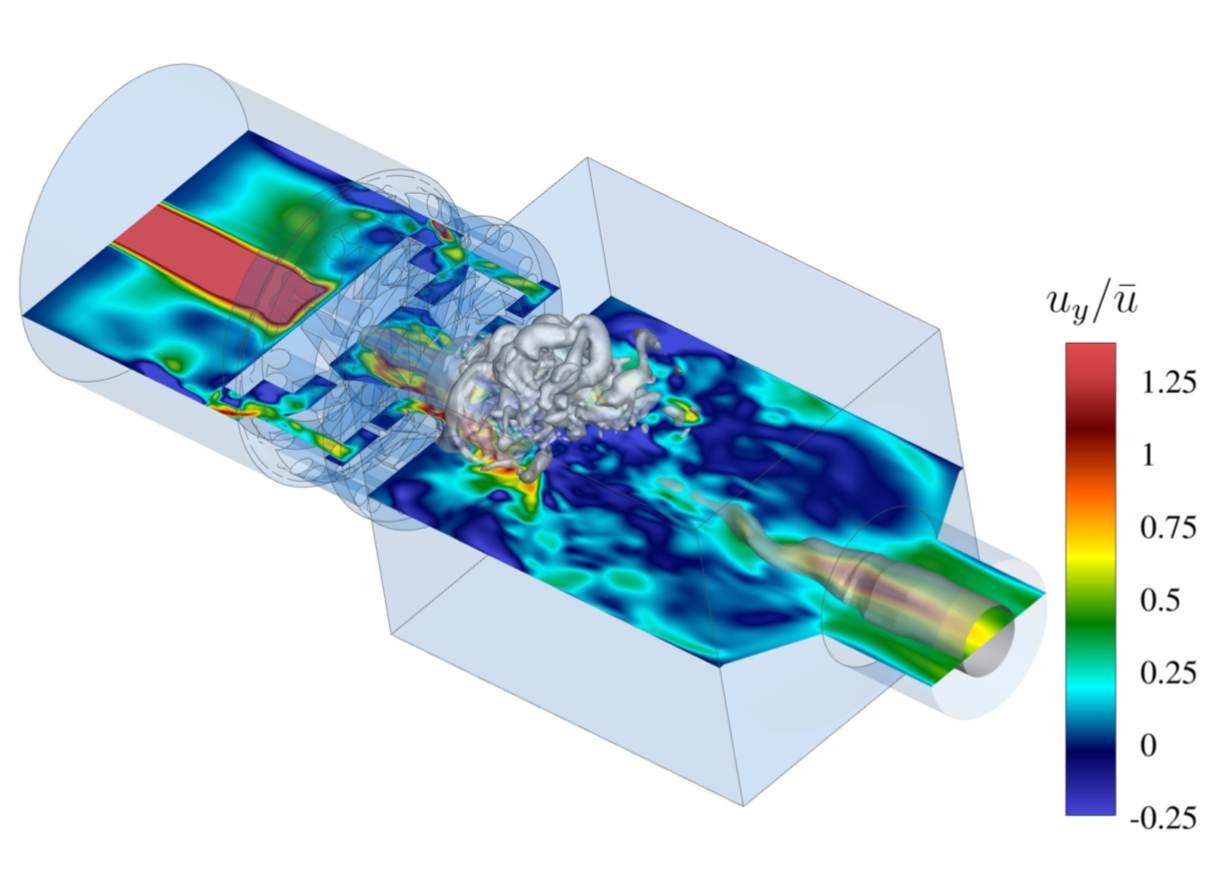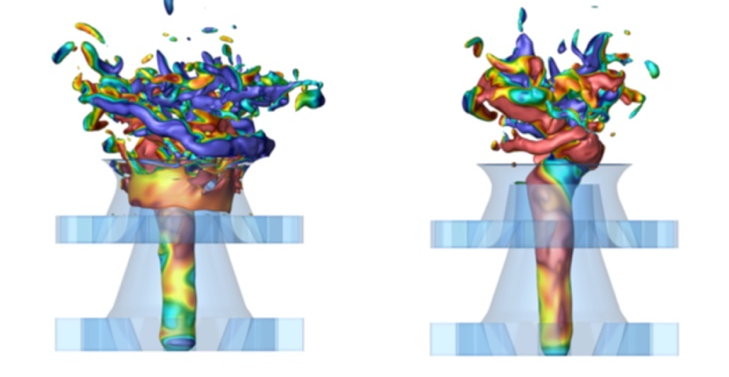Aircraft engines are the power sources for large airplanes, with the combustor serving as the heart of the engine. Within the combustor, the chemical energy of the fuel is released and converted to thermal energy. The combustion efficiency and stability of the engine, as well as its pollutant emission characteristics, are closely related to the design of the combustor. Associate Professor Yu Lv and postdoctoral researchers from the Turbulence Research Team at the Institute of Mechanics utilized Large Eddy Simulation (LES) techniques to predict the complex internal flows in dual-swirler aero-engine combustors, exploring the impacts of numerical scheme and subgrid model configurations on the predictive capability of internal flows. This research particularly focused on the evaluation of LES technology under low grid resolution conditions, as this is highly relevant to real-world industrial applications. To develop LES configurations with different dissipative effects (both numerically and physically), various combinations of Riemann flux formats and subgrid model configurations were considered in this work. By analyzing LES results obtained from different configurations, key flow characteristics were qualitatively compared, and a quantitative assessment was made against experimental measurements.
The study found that the choice of numerical scheme plays a significant role in controlling time-averaged flow patterns, while the influence of subgrid models is mainly reflected in unsteady flow features, such as vortex break-up and precessing vortex cores. Based on the error analysis, we discovered that lower dissipative LES settings do not always lead to increased accuracy in LES, contrasting with the conventional understanding often accepted in the literature. This work, funded by the by the NSFC Basic Science Center Program and the International Partnership Program of Chinese Academy of Sciences, has been published in "Physics of Fluids", with Special Research Assistant Zheng Qiao as the first author and Associate Professor Yu Lv as the corresponding author.

Figure 1:Instantaneous flow fields

Figure 2:Precessing vortex core structure under different LES configurations. Left:AUSM+ & Vreman,Right:HLLC & Vreman.